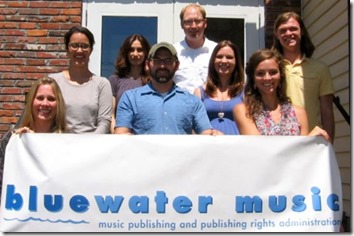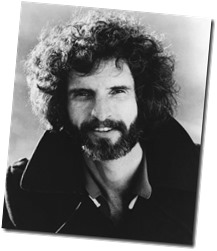People don’t pour new wine into old wineskins. If they do, the wine will make the skins burst,
and both the wine and the skins will be ruined. -Mark 2:22
Article 1, Section 8,Clause 8 of the United States Constitution is the starting point for any discussion of intellectual property, and in this specific case copyright. In it, our Forefathers gave Congress the right to establish a monopoly in favor of authors and inventors for the fruits of their labor. The merits and justification for granting this monopoly was apparently the subject of considerable debate amongst the likes of Thomas Jefferson, James Madison and Charles Pinckney, not to mention the remaining representatives to the Constitutional Convention, who spent a week long session in August 1787 discussing various proposals enumerating the powers of Congress.
 Jefferson was, perhaps, one of the staunchest proponents of limiting governmental monopolies in all respects, but in particular with regard to restricting the use of original thought. In his indubitably prosaic way, Jefferson said "If nature has made any one thing less susceptible than all others of exclusive property, it is the action of the thinking power called an idea. . . . [fusion_builder_container hundred_percent=”yes” overflow=”visible”][fusion_builder_row][fusion_builder_column type=”1_1″ background_position=”left top” background_color=”” border_size=”” border_color=”” border_style=”solid” spacing=”yes” background_image=”” background_repeat=”no-repeat” padding=”” margin_top=”0px” margin_bottom=”0px” class=”” id=”” animation_type=”” animation_speed=”0.3″ animation_direction=”left” hide_on_mobile=”no” center_content=”no” min_height=”none”][S]he made them . . . incapable of confinement or exclusive appropriation.” In conclusion, Jefferson opined that “Inventions then cannot, in nature, be a subject of property.
Jefferson was, perhaps, one of the staunchest proponents of limiting governmental monopolies in all respects, but in particular with regard to restricting the use of original thought. In his indubitably prosaic way, Jefferson said "If nature has made any one thing less susceptible than all others of exclusive property, it is the action of the thinking power called an idea. . . . [fusion_builder_container hundred_percent=”yes” overflow=”visible”][fusion_builder_row][fusion_builder_column type=”1_1″ background_position=”left top” background_color=”” border_size=”” border_color=”” border_style=”solid” spacing=”yes” background_image=”” background_repeat=”no-repeat” padding=”” margin_top=”0px” margin_bottom=”0px” class=”” id=”” animation_type=”” animation_speed=”0.3″ animation_direction=”left” hide_on_mobile=”no” center_content=”no” min_height=”none”][S]he made them . . . incapable of confinement or exclusive appropriation.” In conclusion, Jefferson opined that “Inventions then cannot, in nature, be a subject of property.
These concerns about granting rights of property to intellectual property, as expressed by Jefferson, were actually addressed by Charles Pinckney in his proposal. His proposed clause, “to secure to authors exclusive rights for a limited time, added the infamous phrase to other proposals drafted by Madison. It was combination of their drafts that were used by the Committee of Detail to draft the final clause, which included the “for a limited time” phraseology that has been the subject of debate in recent years.
Under this authority, Congress has, through the years, established certain limitations on the monopoly of copyright. Beginning with the first U.S. copyright law of 1790, wherein authors were given a 14 year monopoly, plus the option to extend the monopoly for a second 14 year term, to the present construct wherein authors are given a monopoly for the duration of their life, plus an additional seventy years in which their families and/or heirs can exercise the monopoly.
In addition to the time limitation, and in the spirit of Thomas Jefferson, Congress also imposes other limitations on the monopoly of copyright. For example, originally the copyright monopoly on applied to “useful knowledge” produced by society, that is primarily writings. This limitation evolved of the years into what we now understand as the definition of a copyright, i.e., an original idea expressed in a tangible format for more than a transitory duration. Other limitations such as the first sale doctrine and fair use are not pertinent to the point here, but also serve as limitations on creators’ rights.
Throughout history, these limitations on the monopoly of copyright have, for the most part, served to create a very delicate balance between the need, perceived by our Forefathers, to incentivize authors and inventors to populate the marketplace of ideas on the one hand, against the utilitarian goal of providing a free exchange of those ideas for the good of society. This creates the public domain concept of copyright law.
So it is, then, that the proprietary nature of an original idea is based on expression of that idea in a manner than can be controlled, i.e., a tangible format, again addressing the concern of Jefferson that an idea may be exclusively possessed as long as a person keeps it in their head, but “the moment it is divulged, it forces itself into the possession of everyone. . . every other possesses the whole of it.” The resulting corollary of this is that the ideas themselves, absent expression, as well as the facts about the phenomena of the world, are considered to be the collective knowledge, or property, of humanity. Therefore, so far in history, what I call the continuum of knowledge has been made up of these unexpressed ideas together with the works that have fallen into the public domain.
This continuum of knowledge was envisioned by our Forefathers for the greater good of society and is the reason that, for example, tangible expressions of one of Claude Monet’s favorite subjects, the Saint-George cathedral in Venice, are theoretically entitled to copyright protection at the same time as the later paintings of François Salvat conveying expressions of the same subject. Once the painters’ expression of the idea that is the Saint George cathedral is transformed onto canvas, he is entitled to enforce the monopoly of copyright. Conversely, the mere idea or fact that is the cathedral is never the subject of individual property protection by the painter.
Stated another way, the law by necessity is focused on the embodiment of the idea, as opposed to the idea itself or, to use a biblical reference, it focuses on the wine skins more than the wine as a means of control. This conflation of the expressed idea – described by the Supreme Court as “evanescent” – and the physical embodiment creates more misunderstanding regarding the concept of copyright than perhaps any other. In our advanced age of digitization, it is now more important than ever for us to remember the distinction between the two elements.
The best illustration of this conflation is perhaps the area of musical works. For purposes of this discussion, we will ignore, for the moment, that there is a separate copyright for sound recordings of musical compositions and focus primarily on the latter. In the early 1900’s, vinyl records became the embodiment of choice for musical compositions. In the 60’s, it was the 8-track tape and in the 70’s it was the analog cassette. In the 80’s, as digital technology advanced, we used the compact disc and digital audio tape, which ultimately led to the mp3 format in the 90’s and afterward. Once digitization became possible, all tangible expressions we subjected to the process and it became possible to make flawless copies of the “wine” that was paintings, photographs, text, music, graphics, video, sound recordings, and cartoons.
John Perry Barlow, ex-Grateful Dead lyricist turned founder of the Electronic Frontier Foundation, describes this phenomenon:
Now, as information enters cyberspace . . . these [wine] bottles are vanishing. With the advent of digitization, it is now possible to replace all previous information storage forms with one metabottle: complex and highly liquid patterns of ones and zeros.
From the moment of digitization forward, the fusion of the expressed idea and the embodiment was “rent asunder,” changing forever more how we perceived copyright. Tangible expressions, once embodied in pigments, paper, strips of celluloid, discs of vinyl or plastic, and tape, now existed as glowing impulses of voltage conveyed in zeros and ones, flitting around the Internet at the speed of light. The expressions, in other words, are now closer to pure thought than our Forefathers, perhaps, ever dreamed possible. Digital technology thus threatens to disturb the delicate balance they intended to establish in their creation of a copyright monopoly. The truly “evanescent” nature of a digital copyright monopoly makes it extremely difficult to fit into the “old skin” that is “an original idea expressed in a tangible format for more than transitory duration.”
The “RAM Fixation” cases that arose in the late 90’s – the seminal case being MAI Systems Corp. v. Peak Computer, illustrate the imbalance precisely, as the courts struggled to determine whether a cached copy of a copyrighted work that existed in the random access memory of a computer for no more than a second was sufficient “fixed in a tangible format” for more than a “transitory time,” thus warranting protection under copyright law. The 9th Circuit in MAI Systems ruled that it was sufficient, but other courts, like the 2nd Circuit in Cartoon Network v. CSC Holdings, found otherwise, ruling that the copy was “fleeting” and therefore not “embodied . . . for a period of more than a transitory duration. . . .” The Supreme Court has yet to rule on this issue.
Once the veil was rent asunder, trying to enforce a copyright monopoly was somewhat akin to trying to sweep back the ocean with a broom. Beginning with its efforts against Diamond Multimedia in the late 90’s and its efforts against Napster and Grokster, and continuing through to the present through it efforts against more than 17,000 individual downloaders, the track record of the Record Industry Association of America in its fight against illegal downloading is the perfect example of this fruitless effort. Rather than adapt and transform our concepts of copyright – the wine skin – to conform with the new wine – digitization of art – the music industry continued to cling to the status quo, a hand forced in part by decades of doing business under the old model.
What does this conundrum mean for copyright law and the efficacy of a monopoly in the fruits of our creative labor? Before answering that question, and lest we forget, new technologies have always created challenges to Constitutional law. If we view our founding document as a living, breathing document that was created to adapt to such challenges, it may help address the current challenge.
This is not the first time in history that a new technology has challenged an existing way of thinking. Even in the music industry, the introduction of the “talking machine,” a/k/a the phonorecord player, created such a stir that John Philip Sousa testified before Congress that the invention would “ruin the artistic development of music in this country” because our vocal chords would no longer be used and therefore vanish as a result of evolution! What seems like an extreme position now is only perceived as such through the lenses of hindsight. Congress responded to Sousa’s and the industry’s concerns, as it often does, by revising the copyright law to address new technologies.
In responding to the new technologies of our generation, we must keep in mind the primary objectives of Jefferson and others in the creation of a copyright monopoly in order to adequately address the issues – they wanted to assure the widespread distribution of ideas for the benefit of society by giving the creators of ideas a monopoly. They were dedicated to encouraging the dissemination of mental creations throughout the New World where they could be used, entering the mind of others – the continuum of knowledge – by assuring their creators that they would be compensated for the value of such dissemination. Once certain limits had been reached, the protected ideas would enter the market place of ideas, the continuum of knowledge, and become freely available to the public for use in the creation of new ideas.
The problem with many solutions being proposed by advocates of copyright, as well as those who would have us do away with the concept, is that they ignore the delicate balance by focusing on one aspect of that principal while ignoring the other. Just because we can now “unclothe” the idea, stripping away its tangible, physical embodiment, does not eliminate the system of confinement, i.e. the copyright monopoly, envisioned by the Forefathers. Jefferson clearly grabbled with the concept that an idea was “incapable of confinement,” but nevertheless clearly chose to participate in the creation of a system that would, in fact, confine the very thing that was incapable of confinement. So, even though the creations of authors and inventors now, more than ever, more closely resemble a mere idea, using the tools given to us by our Forefathers, our society can still adapt our system that offers incentives to those authors and inventors for the dissemination of the fruits of their labors.
Through new technologies and interpretations, we can develop “virtual bottles” to store our new wine, bottles which replace the old physical, less evanescent wine skins of embodiment. Since laws on meant to reflect public opinion, perhaps in the end the future of the copyright monopoly may depend more on perceptions than it does on restrictive regulations.
[/fusion_builder_column][/fusion_builder_row][/fusion_builder_container]








 Notwithstanding that incredibly inconvenient post-mortem
Notwithstanding that incredibly inconvenient post-mortem 

 Jefferson was, perhaps, one of the staunchest proponents of limiting governmental monopolies in all respects, but in particular with regard to restricting the use of original thought. In his indubitably prosaic way, Jefferson said "If nature has made any one thing less susceptible than all others of exclusive property, it is the action of the thinking power called an idea. . . . [fusion_builder_container hundred_percent=”yes” overflow=”visible”][fusion_builder_row][fusion_builder_column type=”1_1″ background_position=”left top” background_color=”” border_size=”” border_color=”” border_style=”solid” spacing=”yes” background_image=”” background_repeat=”no-repeat” padding=”” margin_top=”0px” margin_bottom=”0px” class=”” id=”” animation_type=”” animation_speed=”0.3″ animation_direction=”left” hide_on_mobile=”no” center_content=”no” min_height=”none”][S]he made them . . . incapable of confinement or exclusive appropriation.” In conclusion, Jefferson opined that “Inventions then cannot, in nature, be a subject of property.
Jefferson was, perhaps, one of the staunchest proponents of limiting governmental monopolies in all respects, but in particular with regard to restricting the use of original thought. In his indubitably prosaic way, Jefferson said "If nature has made any one thing less susceptible than all others of exclusive property, it is the action of the thinking power called an idea. . . . [fusion_builder_container hundred_percent=”yes” overflow=”visible”][fusion_builder_row][fusion_builder_column type=”1_1″ background_position=”left top” background_color=”” border_size=”” border_color=”” border_style=”solid” spacing=”yes” background_image=”” background_repeat=”no-repeat” padding=”” margin_top=”0px” margin_bottom=”0px” class=”” id=”” animation_type=”” animation_speed=”0.3″ animation_direction=”left” hide_on_mobile=”no” center_content=”no” min_height=”none”][S]he made them . . . incapable of confinement or exclusive appropriation.” In conclusion, Jefferson opined that “Inventions then cannot, in nature, be a subject of property. 